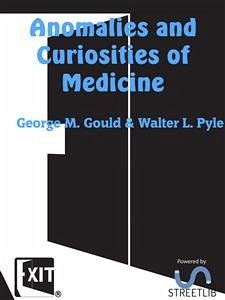Since the time when man's mind first busied itself with subjects beyond his own self-preservation and the satisfaction of his bodily appetites, the anomalous and curious have been of exceptional and persistent fascination to him; and especially is this true of the construction and functions of the human body. Possibly, indeed, it was the anomalous that was largely instrumental in arousing in the savage the attention, thought, and investigation that were finally to develop into the body of organized truth which we now call Science. As by the aid of collected experience and careful inference we to-day endeavor to pass our vision into the dim twilight whence has emerged our civilization, we find abundant hint and even evidence of this truth. To the highest type of philosophic minds it is the usual and the ordinary that demand investigation and explanation. But even to such, no less than to the most naive-minded, the strange and exceptional is of absorbing interest, and it is often through the extraordinary that the philosopher gets the most searching glimpses into the heart of the mystery of the ordinary. Truly it has been said, facts are stranger than fiction. In monstrosities and dermoid cysts, for example, we seem to catch forbidden sight of the secret work-room of Nature, and drag out into the light the evidences of her clumsiness, and proofs of her lapses of skill,—evidences and proofs, moreover, that tell us much of the methods and means used by the vital artisan of Life,—the loom, and even the silent weaver at work upon the mysterious garment of corporeality.
Hinweis: Dieser Artikel kann nur an eine deutsche Lieferadresse ausgeliefert werden.
Hinweis: Dieser Artikel kann nur an eine deutsche Lieferadresse ausgeliefert werden.









